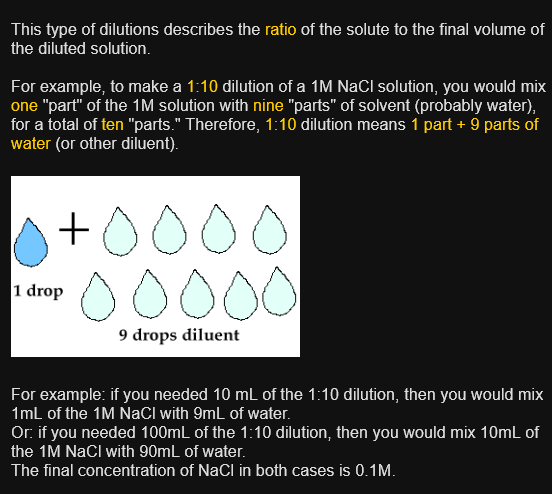You are using an out of date browser. It may not display this or other websites correctly.
You should upgrade or use an alternative browser.
You should upgrade or use an alternative browser.
A dilution ratio question (What is 1:10) Poll please?
- Thread starter haaammit
- Start date
More options
Thread starter's postsThe dilution difference between 1 per 50 units and 1 per 51 units isn't going to be significant.Looks like i've been doing my 2 stroke mix wrong in my chainsaw and strimmer. It's 50:1. I generally add 100ml of oil to 5l of petrol.
Quite late to the discussion here it would seem this is the correct answer. They key is the terminology of mix vs diluteI think some people are comparing "mix" with "dilute"? Mix 1:10 generally means 1 part of A plus 10 parts of B. "Dilute" generally means (and always to a scientist) make 1 part of A up to ten times the original volume with B (1+9 effectively). That said, a lot of instruction manuals are written by people with no scientific background, and who think the two terms have the same meaninhg
Quite late to the discussion here it would seem this is the correct answer. They key is the terminology of mix vs dilute
No, as DP pointed out the keywords are ratio or fraction.
Also the notation for ratio ":" is being abused a bit which has added to the confusion.
Dilution ratio 1:10 means 1 part to 10 (like any other ratio)
Dilution fraction 1/10 means 1 part out of 10 (like any other fraction)
Yep. This is ridiculous. Only encountered it once coming to the UK. I would imagine everywhere else in the world, it is twice a month. Same confusion ensued with bi-weekly but in that case, I understand it as every two weeks. At least bi-annual and biennial are different spelling to differentiate.This thread reminds me of this ridiculous term
Completely clear!

I will defer as that also makes senseNo, as DP pointed out the keywords are ratio or fraction.
Also the notation for ratio ":" is being abused a bit which has added to the confusion.
Dilution ratio 1:10 means 1 part to 10 (like any other ratio)
Dilution fraction 1/10 means 1 part out of 10 (like any other fraction)
Soldato
- Joined
- 25 Nov 2005
- Posts
- 12,636

So what's the proper size of this tank when diluted with water ?
Man of Honour

So what's the proper size of this tank when diluted with water ?
Panthcake.
Ugh

Man of Honour
Which genius decided to express dilution factors in the same format as a ratio?
They could have just used a slash instead, so not only would it be a different notation, it'd be accurate as it'd turn it into a fraction.
*I want a wall bash smiley*
:edit: wow the transparency didn't work well. Meh oh well.
Last edited:
Work in a lab, 1:10 would mean 1 part to 9 parts. When you use : it tends to indicate a ratio.No it doesn't. It means 1 part X and 10 parts Y.
When you mix mortar at 4:1, it means 4 parts sand 1 part cement for a total of 5 parts.
Now if they said a concentration of 10%, then that would be 1:9.

Work in a lab, 1:10 would mean 1 part to 9 parts. When you use : it tends to indicate a ratio.

See that sort of sloppiness is where the problem occurs - firstly the abuse of notation (using : instead of / ) and secondly that screenshot claims it's describing a "ratio" when what they've actually explained is a fraction. If you want "1:10" to actually mean a ratio of 1:9 then don't call it a ratio and don't use ":", use "/".
Soldato
Yeah they should just say concentration of 10% in a lab setting, anyone working in that profession should be quite capable of working out what quantity they need.
Caporegime
After the stupidity of the ratio not ratio ratio, this has made everything betterur welcome x
:edit: wow the transparency didn't work well. Meh oh well.



